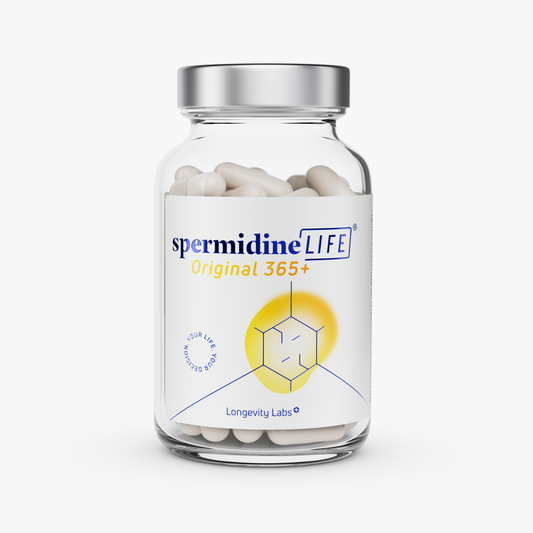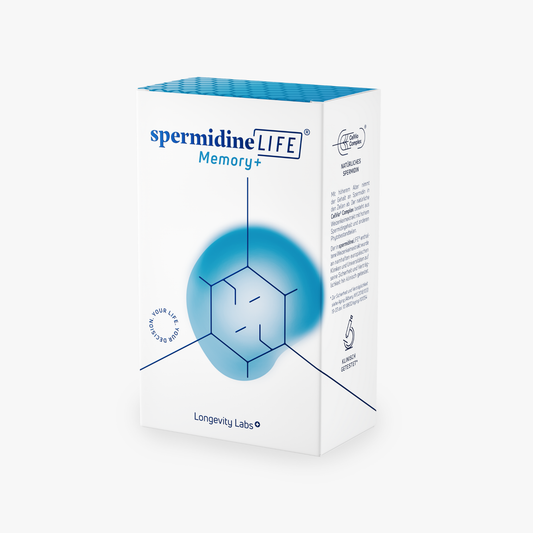
Fasting and fitness
Fasting,Fitness, TLL LongevityLabsEven if many claim fasting and sports is a bad combination, we want to convince you of the opposite today. Because done correctly, interval fasting supports your fitness goals! We show you how.
You often hear that interval fasting and sports don't go together. There are endless reasons that fasting opponents name here. Today, we want to clear up the two biggest falsehoods and show you why you should definitely combine fasting and fitness!
Argument number 1: Fasting leads to a loss of muscle mass!
The first argument that is often raised against fasting for sports enthusiasts is that fasting supposedly leads to a loss of muscle mass. This assumption is closely tied to the belief that one must maintain a constant protein supply in order to not lose muscle mass.
The problem is protein catabolism, which occurs in the background during prolonged fasting. When the glycogen stored in the liver as an energy source is depleted, our body converts protein to glucose, among other things, to maintain blood sugar levels. If no protein is supplied via food at this time, the body automatically falls back on the protein stores, which are located in the muscles, among other places. For those who find this somewhat confusing, we recommend the article about the biological processes during fasting. There it is explained in more detail.
Not quite true...
To dispel the rumor that fasting leads to loss of muscle mass, we stick to Johannes Steinhart, biomedical scientist and nutritionist. He confirms that this is a normal process when fasting. BUT: First, this process does not occur immediately, but only over a longer period of fasting. An experiment showed that after 16 hours of fasting, muscle protein provided only 50% of the maintenance of glucose levels. It is only after 28 hours of fasting that liver glycogen stores are completely depleted and muscle protein is used for 100% of the protein source. This concerns thus none of the common interval fasting methods.
Secondly Johannes Steinhart explained that we can cover the protein need very well with meals in between - which are intended with the Interval fasting. Because protein is absorbed only very slowly by the body. After a protein-rich meal, the body is supplied with protein for several hours. Here, too, an argument for interval fasting.
In addition, we want to mention here the increased release of growth hormones. It has been proven that these hormones are increasingly released during fasting and, together with the appropriate training, even promote muscle growth! A study from 2011 showed that a 24-hour fasting period increased growth hormone levels by an average of 1,300% in women and almost 2,000% in men. Incidentally, it's safe to assume that levels are significantly elevated even after 16 hours. Pro argument number 3 for interval fasting!
Argument number 2: Fasting reduces the efficiency
A further argument, which persists even with some scientists, is that chamfered leads to a decreased efficiency. Some argue here with old studies to the efficiency of children, who have concentration difficulties without breakfast. That one cannot compare apples and pears, however, should be clear.
Therefore we go here rather on rudimentarily comprehensible arguments, like that an empty Glykogenspeicher in the liver - and this is tapped as short time memory with chamfering as first as energy source - the blood sugar mirror reduces and in this way the concentration and efficiency diminishes. The assumption: one can therefore not exploit the full training potential.
Sounds plausible at first. The physician and strength sportsman Sven Sparding explains however in turn that - even if one trains at the end of the chamfering phase and thus the last meal as energy source 16 to 24 hours is past - the Leberglykogenspeicher should be still far not completely (!) empty. Apart from that, when the glycogen stores are depleted, the body falls back on our fat cells as energy suppliers. This results in increased fat mobilization and fat burning, which is also quite sufficient to maintain our performance.
What do studies say about the effects of fasting during exercise?
In 2016, a study divided 34 male strength athletes into two groups. One of them practiced 16:8 interval fasting. Both groups consumed the same amount of calories and protein. Consequently, the only difference was the time window in which food was eaten. And lo and behold, the fasting group lost an average of 1.6 kg of body fat, while nothing changed in terms of muscle mass and strength in either group.
But beware: Another study from 2017 - again with weightlifters - showed that fasting is probably not the same as fasting. Here, subjects were instructed to eat only within a 4-hour time window 4 days a week. After 8 weeks, it was shown that only the non-fasters were able to demonstrate muscle growth. It can therefore be assumed that a 4-hour time window is too short to build up muscles.
So what is the situation if you are not a professional athlete?
In a 2017 controlled study, 80 overweight subjects implemented interval fasting. Over a 12-week period, some of them also took an alkaline supplement, while all fasters completed customized endurance training. The result: exercise performance in the fasting group was higher than in the non-fasting control groups!
You want more facts? In 2018, a study appeared in the "Journal of the International Society of Sports Nutrition" in which the subjects practiced a modified 5:2 interval fasting method. They reduced the amount of calories on three days per week instead of two. The conclusion: after 6 weeks, heart rate decreased while exercise remained the same, lactate levels improved, and participants reported a lower rate of fatigue. Additionally, they lost around 15% body fat but just under 3% muscle mass with improved performance. Their blood work showed no negative changes. On the contrary. Their markers for oxidative stress decreased - again, a harbinger of premature aging.
But here, too, caution should be exercised: While such an intensive method can be used in the short term, it should not be practiced over an extended period of time. For this purpose, 16:8 interval fasting, for example, is more suitable.
Are there any testimonials from athletes?
Clear answer: Yes! Examples include blogger and marathon runner Micha Brauer, who documented his 30-day introduction to interval fasting. He was also able to reduce his body fat percentage in this way. He also reported an improved ability to concentrate - not only in terms of his mental activities, but also during marathon training.
Athletic trainer Frederik Kramp is now also a fan of interval fasting. After testing it himself, he recommended it to his athletes as well. He reports that he sleeps better and feels lighter, healthier and more vital. Furthermore, his performance has increased significantly. Both in the weight room and when running in the woods.
Martin Berkhan calls himself the "high priest" of the 16:8 method. The strength athlete, nutritionist, personal trainer, author and blogger has had resounding athletic success with this method. He also recommends individually adapted interval fasting to his clients.
You want to try it out?
We can only support that! Choose an interval fasting method that suits you and plan regular meals during the fasting breaks. Ideally, you should eat the majority of your daily calories in the post-workout phase - 80% if you eat two out of a total of three meals afterwards, or 60% if you eat one out of a total of two meals afterwards. Follow the other tips in the blog post and you can't go wrong. And as always: You can additionally or alternatively increase the positive fasting effect for your cells with spermidineLIFE®!






